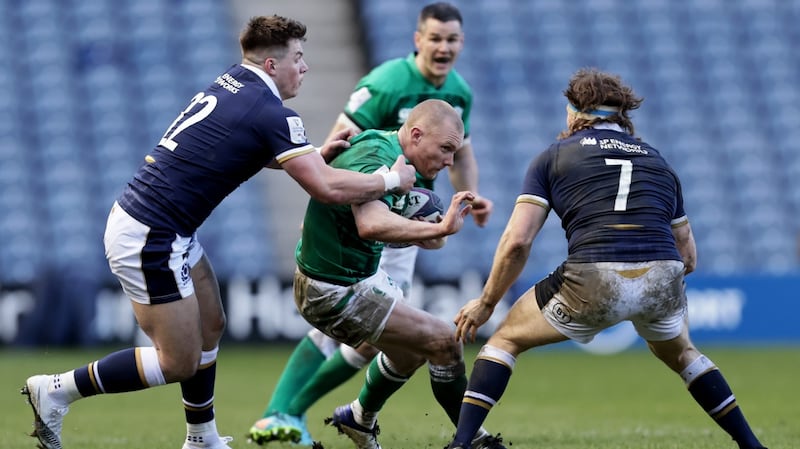A "new era" for rugby is how it is being portrayed. The Welsh Rugby Union has gone even further, calling it "a pivotal moment in the history of the international game in Wales". If you listen to all the trumpet fanfares following the confirmation of CVC's €425 million investment in the Six Nations Championship then "gamechanger" is indeed the obvious phrase.
Or is it? The truth is that no one can be entirely sure. On paper it all sounds marvellous: more money in the coffers at a time when financial reserves are low, a shrewd commercial partner with expertise in the field of maximising digital and TV broadcasting revenue. Quick, where do I sign?
In reality the equation is slightly less sexy. The average private equity firm could give a pool of piranha fish a lesson in the art of single-minded ruthlessness. A healthy return on investment, preferably sooner rather than later, is all that counts; the rest is frippery. There is loads of lovely dosh up front, sure, but rugby’s administrators would be ill advised to sit back, relax and assume they now possess a one-way ticket to the land of milk and honey.
Because if the sport was being outstandingly well run and everything in the garden was weed-free, CVC’s input would not be necessary. And with the television rights market showing every sign of having peaked, where exactly is all this gamechanging extra revenue guaranteed to come from? There are already too many games in the calendar, so simply shoehorning more Tests into the schedule is not an option.
The trick, clearly, is to be smarter than the majority of rugby's administrators have been in the quarter of a century since the game turned professional. Prior to this week no one has managed to separate the international game entirely from club weekends, to offer more than a bit-part role to international women's rugby in commercial terms – "to me it's a wonderful opportunity for the women's game" says Ben Morel, the Six Nations chief executive – or to reinvent competitions to capture not just domestic imaginations but a vast global following to compare to those of, say, the Premier League, NFL or NBA.
Rugby union, you might well argue, could never be that big. Maybe that is its achilles heel: it thinks it is bigger than it is. Then again, almost everyone in rugby feels the same way: the sport has been woefully underpromoted and is still wrongly perceived by too many people as a middle-class game aimed at middle-aged white men who enjoy a pie and a pint.

In that respect, at least, CVC’s timing is excellent. “We are moving, whether we like it or not, into an era of more individual content consumption,” says Morel. “People want to see what they want to see, at whatever time they want to see it, on whatever device they want. It’s about making sure we can deliver that service to our fans … and helping people understand the game better.”
Part of that will involve “moving from simple passive viewership to engagement with the game” as Morel puts it. “If you want to see the best tries of a player from the past you should have easy access to that. Tracking player movement within games, tracking the ball itself … it’s also an opportunity to make the game much simpler for the casual fan. Helping people understand the complexities of the game is something I really want to push forward.”
Let us set aside for a moment, though, the clever gizmos, the jazzed-up match-day “experience” and the free-to-air versus paywall argument and concentrate on the basic product. Morel makes no secret of the fact that one of the first priorities will be to create “a real wrap-up story around the autumn internationals” that works for players, broadcasters and fans alike. Then there is CVC’s investment in both the Pro14/Pro16 and the Premiership, which would suggest that, one day, the two leagues will become more closely aligned. Again, there is a certain logic there.
You wonder whether they might eventually fancy the really big one, the Rugby World Cup, with World Rugby already twitchy about the “influence” that CVC may wield. For now, though, it is any tweaks made to the Six Nations that will define whether the swell folks from private equity are really shining white knights or, ultimately, something else. Will they advise sticking one game in every round (answer: probably) behind a paywall? Or will they be smarter and try to boost the global audience by other means?
Is it almost too easy, for example, to imagine a play-off between the Six Nations winners and the kings of the Rugby Championship? And if you were to do that, why not have one between the bottom side in the Six Nations and the top side in Rugby Europe’s Championship, whose top four sides are currently Georgia, Romania, Russia and Spain?
Currently Italy’s points difference after just four games is a gruesome -142. Defeat at Murrayfield this weekend by 10 points or more will ensure, statistically, the worst Six Nations campaign recorded by any side. Can such a paltry return be tolerated indefinitely? If their “new era” partners put forward a strong-enough financial argument, even the turkeys may yet be forced into voting for Christmas. - Guardian











